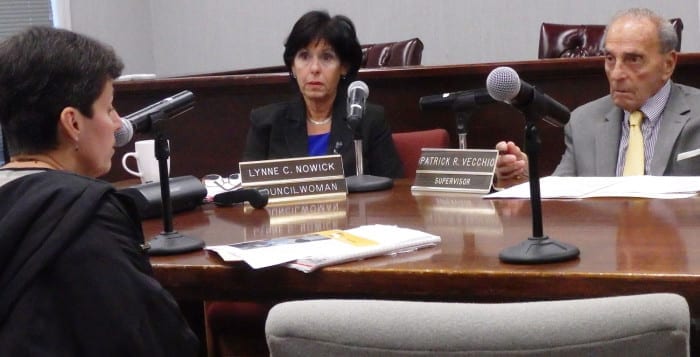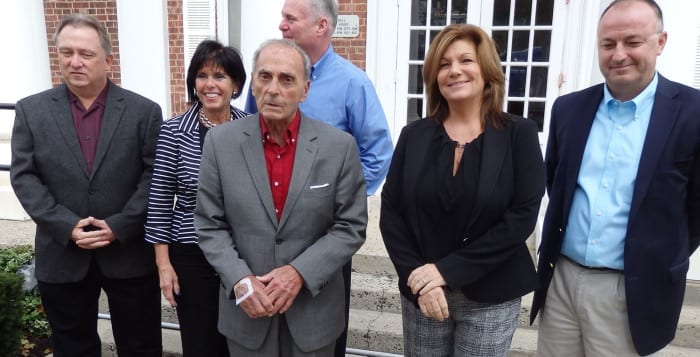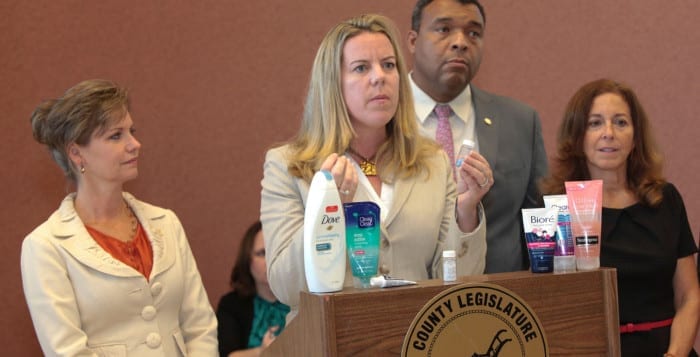After three months and two storms, the Village of Poquott will continue its storm cleanup into the fall and winter months.
On Thursday, Oct. 8, the Board of Trustees for the Village of Poquott discussed phase three of the storm cleanup. While Poquott’s parks, beaches and areas around the village were cleaned during phase one and two, phase three focuses on clearing the trees that were damaged during the Aug. 4 storm.
Deputy Mayor Harry Berry of the Village of Poquott said four trees fell during the week with the windy weather from storm Joaquin. One tree caused a power shortage and started a fire in the basement of a nearby house on the corner of Cedar Avenue and Washington Street.
Berry also said these trees could cause further damage if they are not tended to.
“We have branches that are hanging up in trees. Should they fall down on somebody’s car, it may kill them,” Berry said in a phone interview. “If it comes down out of the trees…on somebody walking their dog or their kid and it kills the kid or the person’s dog, the village is going to be responsible.”
Thus far there are 28 damaged trees standing in the village. Some are broken, leaving 30- to 40-foot stalks standing, while others are severely damaged. While these trees are a safety concern for Berry, funding the cleanup is another issue. According to Berry, the village spent $11,500 for storm cleanup. Currently they are unsure how much it will cost the village to fund phase three of the cleanup, which will go out for bid this week.
But Board Trustee Jeff Koppelson said the board should get their facts straight before beginning phase three.
“We need to start [figuring] out what’s ours, what’s private property and then [start] to…take care of some of this stuff based upon what we can afford to do,” Koppelson said during Tuesday’s meeting.
Mayor Dee Parrish said during the meeting that there are trees in nearby parks that are down and take precedence over others. Parrish was unavailable for additional comment following the meeting.
While some of the 28 damaged trees may fall within private properties or nearby roadways, Berry as well as Richard Parrish, the president of Impact Environmental whose company funded Poquott’s Trustee Park cleanup, claimed some community members oppose the storm cleanup because “they’re afraid their taxes might go up.” Forcing homeowners to fund parts of the current and past storm cleanup was met with opposition from Poquott residents including Berry. The suggestion was made during phase two of the storm cleanup and was briefly discussed for phase three.
“You have lots of people in the village that are older [and] are on fixed incomes,” Berry said. “They can’t afford that kind of money.”
It was the board’s decision to go through the village to fund the cleanup and remove obstacles that cause transportation issues. While Long Island Tree Service was the company that completed phase one and two and evaluated the damaged trees in the village, it is unclear whether they will also complete phase three. Berry said companies are given two weeks to respond to the village’s bid for this phase.
Once the village finalizes the bidding process, Berry projects that clearing the damaged trees will take all of November “if [they’re] lucky.” Regardless of how long it may take, Berry said the village needs to work together to get the job done.
“The village…needs to understand that the whole village is in this together as a community,” Berry said. “It’s not any one person [working to clean the village].”














